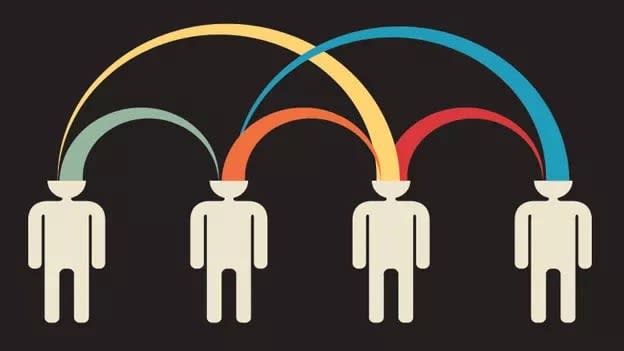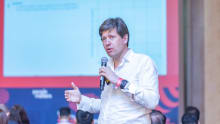The Future of Employee Engagement: Perks of Personalization and Predictive analytics

TechHR Singapore 2019 Read similar articles

According to a new Harris Poll with a sample size of 2,257 HR professionals and recruitment managers for CareerBuilder, the wrong choice of candidate cost the average employer a steep $14,900 in 2017. Moreover, 10% of the participants stated the lack of adequate tools contributed severely to wrong candidate choices. These numbers speak of a ubiquitous recruitment hurdle and point towards and even greater retention obstacle. No wonder every organization today is upgrading their employee engagement methods! Companies have finally made (or are in the process of making) the shift to regarding their employees as digital consumers who need to be able to connect and plug into work with the same comfort level they have at home.
ConnectMe at Deloitte for example, not only utilizes the best in class CRM cloud solution by Salesforce but also provides for the creation and maintenance of a truly digital workplace through insightful data mining and need-based solutions and improve employee experience and thus look at better engagement.
A personal touch
With the concept of work having evolved, more employees today seem to want to feel at home at work. Whether it is the location they work out of, the tools they use or even the schedule they follow, employees look for a certain level of personalization that makes them relate better to work.
With our recent digital leaps, personalization is now possible at a whole new level and is thus a pervasive trend across workplace, industries and geographies. The experiential employee of today might want to “meet” and have a face-to-face conversation with colleagues across the world and with the new AR (Augmented Reality) enabled workplaces that is no longer fiction. Employees can now free their schedules off routine tasks with the help of AI assistants. They could plan their work better by making the most of software that is intuitive and use analytics to predict the steps ahead. It’s ironic that non-human interventions could increase the essentially human personal touch that is an unavoidable requisite today.
The following is a pictorial depiction of the different levels of engagement. Personalization must be extended across all these levels:
Implications of personalized innovation
Personalization at work today is thus more than just allowing employees to bring in their own systems or coffee mugs. It could also be acknowledging the need of an employee to work remotely from a “distraction-free” location. At the moment, personalized engagement endeavours are in the middle of moving from being an afterthought to being the norm.
With work cultures evolving into connected, cohesive ecosystems, new trends like BYOS (Bring Your Own Software) is gaining popularity. Moreover, this points towards a more intriguing shift – organizations allowing employees the freedom to personalize work processes – to choose enterprise apps and software that they feel benefit them the most.
With software offerings themselves moving toward intelligent, personalized, specific and tailored experiences themselves, everyone is entitled to their own slice of personalized brand of reality at work. This has implications for software companies too since they now not only have to stay ahead of the curve but at the same time, ensure that their offerings play nice with the other apps and software that their customers tune into. This is a key learning point for organizations who are trying to adapt to these new trends so that information and communication flows seamlessly across platforms.
Primary issues that confront personalization at work are that of security and compliance. The basic format of monitoring then calls for a change with regard to protection of company information, compliance with non-disclosure and other such agreements. It is for each organization to weigh out whether the benefits of allowing a BYOS environment negate the risks.
Engagement redefined
There is a sizable percentage of employees today who would choose lifestyle perks over a bigger pay package. Such crucial changes in terms of workforce behavior have been instrumental in leading the thought renaissance that we see around the industry today. The modern employee wants his/her respective organizations to add more than financial value to their lives. Recognition, personal and career development, happiness and wellness, work-life balance are among the other aspects of work that are of mounting importance when it comes to engagement and retention.
According to Forrester Research, Employee Experience Powers the Future of Work, 2017, besides being recognized for their effort at work, employees seek technology-driven experiential, immersive processes and tangible changes like personalizing benefits. The Hays US What People Want Survey conducted in 2017 revealed that 71% of the participants indicated that they would be keen to accept lower pay for a job that allowed greater role-alignment in terms of what their past experience, present needs and future plans. Furthermore, customizable benefits seem to have a direct and positive influence on employee loyalty as seen in the MetLife, 15th Annual U.S. Employee Benefit Trends Study, 2017.
Predictive analytics: the crystal ball of behaviour?
An analysis by LifeWorks, Taking Care: How to Develop and Support Today’s Employees, 2017, enumerates how organizations run the risk of losing quality workers if they fail to tweak their strategies in order to provide employee experiences that are personalized and truly engaging. That is where using the gifts of predictive analytics come into play. Employees are human and analyzing human behavior often poses difficulties due to its dynamism and the need to take into consideration individual differences. These data points not only help in tracking payroll, benefits enrollment or growth projection but also allow for the prediction of growth and longevity of an employee.
“If you had analytics that could help you predict the success of a candidate based on their past performances, their skill levels, their personality and their cultural fit it could paint a better picture of how they will fit into your company,” says Michael Fauscette, chief research officer for G2 Crowd. “If the analytics can predict the success of a candidate, then it could be a huge benefit to the hiring process, and if that fits, then it is a huge benefit to retaining an employee.”
As with any technological incorporation at work, behavioural analytics too comes with its set of legal and ethical concerns since monitoring employee behaviour has its complexities and that needs to be acknowledged. It thus needs a certain level of employee education where all employees are made aware of how their data is being used and for what purposes. This would also help in analyzing legal repercussions better. Moreover, before the organization is enabled in making the shift, all levels of leadership and of the HR function must allow a permeation of personalization and predictive analytics.
While the employee engagement space modifies, mutates and evolves, it would be interesting to witness the changes yet to come. Would companies continue to work towards it in retrospect with reactive methods or are we ready for intuitive, predictive and proactive moves?
If you wish to learn further about where employee engagement is headed, join us for People Matters TechHR Conference on 28th February 2019 at Marina Bay Sands, Singapore. Register Now!







